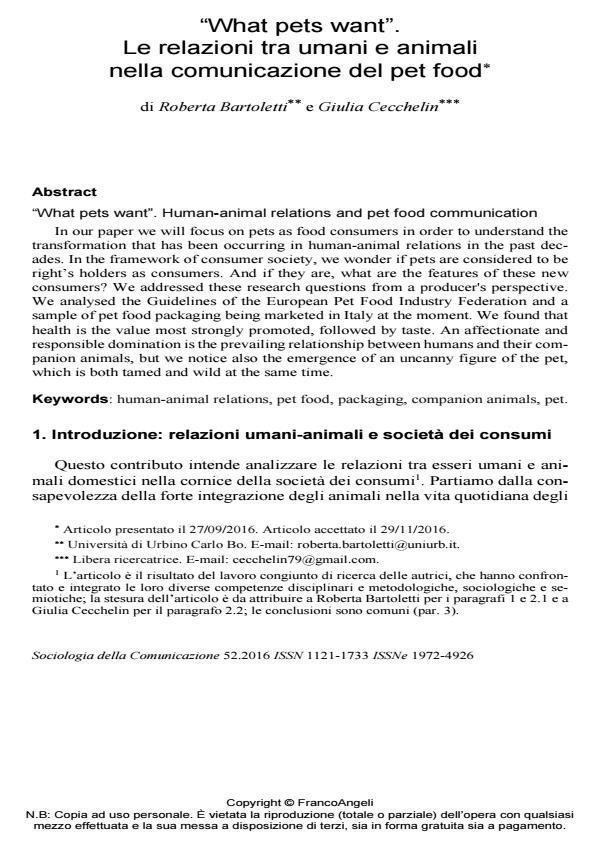"What pets want". Le relazioni tra umani e animali nella comunicazione del pet food
Titolo Rivista SOCIOLOGIA DELLA COMUNICAZIONE
Autori/Curatori Roberta Bartoletti, Giulia Cecchelin
Anno di pubblicazione 2017 Fascicolo 2016/52
Lingua Italiano Numero pagine 32 P. 28-49 Dimensione file 313 KB
DOI 10.3280/SC2016-052004
Il DOI è il codice a barre della proprietà intellettuale: per saperne di più
clicca qui
Qui sotto puoi vedere in anteprima la prima pagina di questo articolo.
Se questo articolo ti interessa, lo puoi acquistare (e scaricare in formato pdf) seguendo le facili indicazioni per acquistare il download credit. Acquista Download Credits per scaricare questo Articolo in formato PDF

FrancoAngeli è membro della Publishers International Linking Association, Inc (PILA)associazione indipendente e non profit per facilitare (attraverso i servizi tecnologici implementati da CrossRef.org) l’accesso degli studiosi ai contenuti digitali nelle pubblicazioni professionali e scientifiche
In our paper we will focus on pets as food consumers in order to understand the transformation that has been occurring in human-animal relations in the past decades. In the framework of consumer society, we wonder if pets are considered to be right’s holders as consumers. And if they are, what are the features of these new consumers? We addressed these research questions from a producer's perspective. We analysed the Guidelines of the European Pet Food Industry Federation and a sample of pet food packaging being marketed in Italy at the moment. We found that health is the value most strongly promoted, followed by taste. An affectionate and responsible domination is the prevailing relationship between humans and their companion animals, but we notice also the emergence of an uncanny figure of the pet, which is both tamed and wild at the same time.
Parole chiave:Human-animal relations, pet food, packaging, companion animals, pet
Roberta Bartoletti, Giulia Cecchelin, "What pets want". Le relazioni tra umani e animali nella comunicazione del pet food in "SOCIOLOGIA DELLA COMUNICAZIONE " 52/2016, pp 28-49, DOI: 10.3280/SC2016-052004